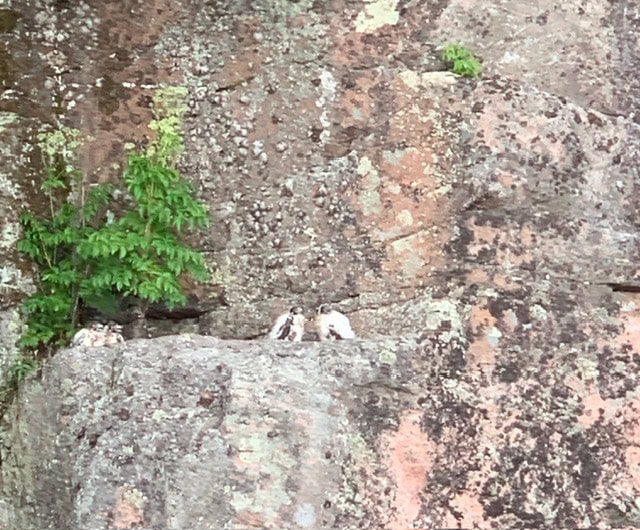My friend Dave McNab spotted this albino American Toad in his yard in Millbrook this month. Brenda Ibey


Here are some very interesting shots I got with a trail camera that I set up in Jackson Park in Peterborough this past March. They include a White-tailed Deer, Eastern Coyotes and a Fisher. Alan Doner







On June 6, we have had a spectacular visitor – a Polyphemus Moth. They’re HUGE, about 5 inches wide. It was just inside the garage by one of the doors in the morning. After a few hours, it raised its wings and released a dark liquid which I thought was to attract a male but this liquid is supposed to be invisible so I’m puzzled. Later, it lowered its wings. The garage was left open until about 11 pm in hopes it would fly out but was then closed in case raccoons or skunks were about in the night. I went out an hour later to check and it was gone, probably somewhere up in the rafters. As they live only about a week to deposit their eggs, sadly she is probably dead by now. They have no digestive system and do not eat. The adult’s only purpose is to mate and lay eggs.
We have had two Midland Painted Turtles up from the river, digging several potential nests but no sign of any eggs. The holes were not filled in at all. We covered the 2 most likely but there’s been no sign of predator interest.
This year we have just one pair of nesting House Wrens, occupying a new Eastern Bluebird nest box. I always thought it was a long shot to attract bluebirds but I’m just glad the house is occupied.
Stephenie Armstrong, Warsaw
Note: According to local moth expert Tim Dyson, “What you witnessed (liquid shooting out of your moth) could pretty much only have been its deterrent fluid that is released when it is disturbed by something. Usually, one has to actually touch the moth to get it to shoot, but not always. Sometimes, they will do this in response to the slightest sound vibration, (even talking nearby), but usually it will happen with a much louder and more abrupt sound like one made by closing a door or dropping something on the ground.


Our Snapping Turtle came up from the river on June 14 to lay her eggs. This year she dug the nest alongside our driveway. We have protected the site as usual with a screened box weighed down and surrounded by heavy rocks, with the addition of little red flags to warn any vehicle coming down the drive to avoid the nest. Yesterday we added extra rocks along the unprotected outer edge.
We didn’t see her arrival but watched her lay the eggs. She then left via a different route, crossing the graveled turning circle in front of me, then coming halfway up the front path to the house. She then turned into the garden where she had to navigate high rocks on the edge of this raised bed to drop down onto the grass. She flipped over when she dropped down but immediately righted herself and went on her way. Stephenie Armstrong, Warsaw



I am not sure of the exact locations as these photos were over the last two weeks. The Eastern Towhee was on Hayes Line, while the rest were at various locations east of Peterborough, including Douro 8th Line , Settlers Line , and Cameron Line . Carl Welbourn, Peterborough







Here’s my photos of a few birds I found on Communication Line today, June 21. Carl Welbourn, Peterborough



Since we opened our Apsley-area cottage in early May, we were worried that there was no activity at the Peregrine nest site although we could occasionally see an adult flying around. Yesterday evening we boated over to the cliff where we first saw two adults flying by – one screaming at us loudly. We then saw a new nest site with four fluffy babies enjoying the sunset. This is the third nest site over the years. The baby falcons have started loosing their down and are looking a little ragged. Marie Duchesneau
